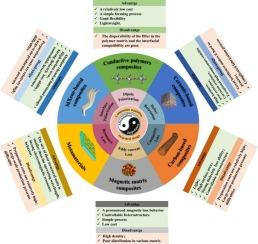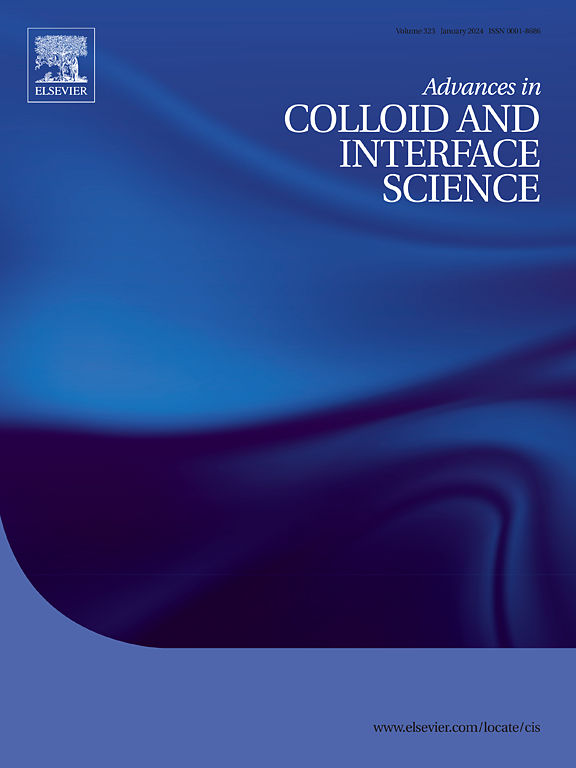低频(Sub-8 GHz)微波吸收材料的进展和机理见解:连接传统架构和新兴前沿的关键综述
IF 19.3
1区 化学
Q1 CHEMISTRY, PHYSICAL
引用次数: 0
摘要
1- 8ghz电磁波在现代通信系统中的迅速扩散,增加了对先进低频微波吸收器的需求。这篇综述强调了8 GHz以下吸收材料的演变,从传统的磁性系统(如铁氧体、金属粉末),受高密度、窄带宽和环境不稳定性的限制,过渡到下一代多功能复合材料。碳基混合材料(如碳纳米管、石墨烯)、磁介电异质结构和新兴纳米材料(如MXenes、超材料)的创新通过成分优化和结构工程实现了轻量化、宽带和可调吸收。系统分析了复合介电常数、磁导率和阻抗匹配等关键电磁参数,阐明了界面极化和多尺度结构效应等吸收机理。最近的进展证明了性能的增强,但由于成本、耐用性和可扩展性等问题,在将实验室规模的创新转化为实际应用方面仍然存在挑战。这篇综述批判性地评估了这些挑战,并提出了前瞻性的解决方案,如机器学习辅助材料设计和可扩展的制造技术。通过将基础研究与应用驱动的见解相结合,这项工作提供了对材料演变和设计原理的全面理解,为低频微波吸收的未来研究提供了路线图。研究结果旨在激发下一代吸收器的开发,为新兴技术需求量身定制性能。本文章由计算机程序翻译,如有差异,请以英文原文为准。

Advances and mechanistic insights into low-frequency (Sub-8 GHz) microwave-absorbing materials: A critical review bridging conventional architectures and emerging frontiers
The rapid proliferation of 1-8 GHz electromagnetic waves (EMW) in modern communication systems has intensified the need for advanced low-frequency microwave absorbers. This review highlights the evolution of sub-8 GHz absorption materials, transitioning from traditional magnetic systems (e.g., ferrites, metallic powders) limited by high density, narrow bandwidth, and environmental instability to next-generation multifunctional composites. Innovations in carbon-based hybrids (e.g., carbon nanotubes, graphene), magnetic-dielectric heterostructures, and emerging nanomaterials (e.g., MXenes, metamaterials) have enabled lightweight, broadband, and tunable absorption through compositional optimization and structural engineering. Key electromagnetic parameters, including complex permittivity, permeability, and impedance matching, are systematically analyzed to elucidate absorption mechanisms such as interfacial polarization and multi-scale structural effects. Recent advancements demonstrate enhanced performance, yet challenges remain in translating laboratory-scale innovations to practical applications due to issues in cost, durability, and scalability. This review critically evaluates these challenges and proposes forward-looking solutions, such as machine learning-assisted material design and scalable fabrication techniques. By bridging fundamental research with application-driven insights, this work provides a comprehensive understanding of material evolution and design principles, offering a roadmap for future research in low-frequency microwave absorption. The findings aim to inspire the development of next-generation absorbers with tailored performance for emerging technological demands.
求助全文
通过发布文献求助,成功后即可免费获取论文全文。
去求助
来源期刊
CiteScore
28.50
自引率
2.60%
发文量
175
审稿时长
31 days
期刊介绍:
"Advances in Colloid and Interface Science" is an international journal that focuses on experimental and theoretical developments in interfacial and colloidal phenomena. The journal covers a wide range of disciplines including biology, chemistry, physics, and technology.
The journal accepts review articles on any topic within the scope of colloid and interface science. These articles should provide an in-depth analysis of the subject matter, offering a critical review of the current state of the field. The author's informed opinion on the topic should also be included. The manuscript should compare and contrast ideas found in the reviewed literature and address the limitations of these ideas.
Typically, the articles published in this journal are written by recognized experts in the field.

 求助内容:
求助内容: 应助结果提醒方式:
应助结果提醒方式:


